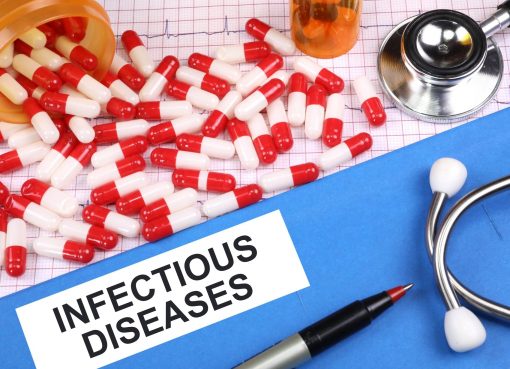Dr. Shantanu Tamuly
Department of Veterinary Biochemistry, College of Veterinary Science, Assam Agricultural University, Khanapara, Guwahati. 781022.
Email: shantanu.tamuly@aau.ac.in
Introduction
The advent of poly(anhydride) nanoparticles marks a pivotal milestone in the advancement of vaccine delivery technology. These nanoparticles, characterized by their unique physicochemical properties, have emerged as frontrunners in the realm of biomedical applications, particularly in the field of mucosal vaccination. Their significance lies in the ability to overcome numerous challenges associated with traditional vaccine delivery methods, thereby offering a pathway to enhance the efficacy of vaccines, especially in eliciting mucosal immune responses. Mucosal vaccines have long been recognized for their potential in inducing both systemic and local immune responses. However, their development has been hindered by several factors, including the instability of antigens, poor absorption across mucosal barriers, and the need for effective adjuvants. Poly(anhydride) nanoparticles, with their structural versatility and biocompatibility, present a solution to these challenges. They protect the encapsulated antigen from degradation, ensure controlled release, and can be engineered to target specific mucosal tissues. The structural integrity and design flexibility of poly(anhydride) nanoparticles are fundamental to their functionality. These nanoparticles are typically synthesized through solvent displacement methods, which allow precise control over particle size, surface charge, and morphology. The particle size, usually in the sub-micron range, enhances cellular uptake and facilitates the transportation of the encapsulated antigen to the lymphatic system. This size optimization is critical for ensuring that the antigen is efficiently presented to the immune cells, a key requirement for an effective immune response. Surface characteristics of these nanoparticles play a vital role in vaccine delivery. Modifications to the nanoparticle surface can be made to improve mucosal adhesion, target specific cell types, or even mimic pathogen-like properties to enhance immune recognition. This versatility in surface engineering allows for the development of highly specialized vaccine delivery systems tailored to specific diseases or immune responses. Poly(anhydride) nanoparticles also excel in their controlled release capabilities. By encapsulating antigens within these particles, a sustained release can be achieved, prolonging the exposure of the immune system to the antigen. This controlled release not only enhances the magnitude of the immune response but also can reduce the need for booster vaccinations, a significant advantage in terms of vaccine compliance and effectiveness. Biodegradability is another key attribute of poly(anhydride) nanoparticles. They degrade into biocompatible byproducts, thereby minimizing systemic toxicity and reducing the potential for long-term adverse effects. This feature is particularly important in the context of human vaccinations, where safety and minimal side effects are of paramount importance. The application of poly(anhydride) nanoparticles in vaccine delivery has been demonstrated across various studies, each contributing to a deeper understanding of their potential. These studies have explored different aspects, including the bio-adhesive properties, immunogenicity enhancement, and targeted delivery capabilities of these nanoparticles. The findings from these investigations, which form the basis of this review, provide valuable insights into how poly(anhydride) nanoparticles can revolutionize vaccine delivery, particularly in the context of mucosal immunization.
Bio-adhesive Properties and Gut Colonization
The bio-adhesive properties of poly(anhydride) nanoparticles are pivotal in the realm of mucosal vaccine delivery, with studies by Salman et al. (2005) showcasing their remarkable efficiency. The nanoparticles substantially augment their bio-adhesive capabilities, particularly in the ileum region of the gut. This enhanced adhesion is not merely a passive interaction; rather, it closely emulates the gut colonization characteristics of Salmonella Enteritidis, a critical aspect for effective mucosal immunization. The concept of bio-adhesion in vaccine delivery is rooted in the principle of prolonged residence time at the mucosal site. This extended presence allows for sustained interaction with the mucosal immune system, thus improving the chances of an effective immunogenic response. The ileum, being rich in Peyer’s patches, serves as a strategic location for targeting since these lymphoid structures play a vital role in initiating mucosal immune responses. In the context of poly(anhydride) nanoparticles, the bio-adhesive property is further enhanced by the surface modification with bacterial flagellin. Moreover, the bio-adhesive nature of these nanoparticles ensures that they are not swiftly swept away by the constant movement and shedding of the intestinal epithelium. This characteristic is crucial in overcoming one of the primary challenges faced in oral vaccine delivery – the rapid transit and degradation of the vaccine components in the harsh gastrointestinal environment. By adhering to the mucosal surface, these nanoparticles provide a steady release of the antigen, thus ensuring a consistent and prolonged exposure to the immune cells. Furthermore, studies indicate that the bio-adhesive nanoparticles can modulate the immune response, swaying it towards a more balanced Th1/Th2 response. This balance is crucial for effective protection against various pathogens, particularly those invading via mucosal surfaces. The ability of these nanoparticles to induce strong mucosal as well as systemic immune responses presents a significant advancement in vaccine technology.
Applications in Mucosal Vaccination
The unique properties of poly(anhydride) nanoparticles, such as bio-adhesion and immunogenicity, make them particularly suitable for mucosal vaccination. Mucosal routes, including oral and nasal, are non-invasive and can induce both local mucosal and systemic immune responses. These nanoparticles, by adhering to mucosal surfaces and slowly releasing the antigen, provide an ideal platform for mucosal vaccine delivery (Camacho et al., 2011). One of the key advantages of poly(anhydride) nanoparticles is their potential for targeted vaccine delivery. By modifying the surface properties of these nanoparticles, it is possible to direct them to specific sites within the body, such as Peyer’s patches in the gut, enhancing the vaccine’s effectiveness. This targeted delivery is crucial in developing vaccines against pathogens that affect specific tissues or organs.
Safety and Biocompatibility of Poly(anhydride) Nanoparticles
The safety and biocompatibility of poly(anhydride) nanoparticles are paramount, especially in their application as vaccine delivery systems. These nanoparticles have been studied extensively and have demonstrated a favourable safety profile, which is crucial for clinical applications. According to Salman et al. (2005), these nanoparticles exhibit minimal toxicity and are well-tolerated in biological systems, underscoring their potential as safe carriers for vaccines. This aspect is further corroborated by Camacho et al. (2011), who found that nanoparticles used in mucosal immunization did not induce adverse effects, highlighting their suitability for human use. One of the most significant advantages of poly(anhydride) nanoparticles lies in their biodegradable nature. As outlined by Irache et al. (2005), these nanoparticles are capable of degrading into non-toxic byproducts. This biodegradability is a critical feature, as it ensures that the nanoparticles do not accumulate in the body, thereby mitigating the risk of long-term toxicity and adverse effects. This characteristic is particularly important in the context of vaccine delivery, where safety is as crucial as efficacy. The biocompatibility of these nanoparticles is further evidenced by their ability to interact benignly with biological tissues. In the study by Salman et al. (2005), it was observed that the nanoparticles, when modified with bacterial components like flagellin, did not elicit undue inflammatory or immune responses, which could potentially compromise their effectiveness or safety. This compatibility with biological systems is essential for their function as vaccine carriers, as it ensures that the delivery system does not provoke a detrimental immune response that could overshadow the intended vaccine response. Moreover, poly(anhydride) nanoparticles have been shown to have a good compatibility profile with various antigens and adjuvants. Camacho et al. (2011) highlighted that these nanoparticles could effectively encapsulate and deliver outer membrane vesicles from Shigella flexneri, a key component in vaccine formulations against shigellosis, without compromising the integrity or functionality of the encapsulated material. This ability to safely incorporate and deliver various types of vaccine antigens and adjuvants further demonstrates the versatility and biocompatibility of these nanoparticles.
Challenges and Future Directions
Despite the promising prospects of poly(anhydride) nanoparticles, challenges remain. These include the need for large-scale production methodologies, ensuring stability during storage, and fully understanding long-term toxicity and biocompatibility. Future research should focus on these aspects and explore the versatility of these nanoparticles in delivering combination vaccines and in therapies for chronic diseases.
Conclusion
Poly(anhydride) nanoparticles represent a significant innovation in vaccine delivery. Their controlled release, bio-adhesion, and ability to enhance immune responses make them a valuable tool for developing new vaccination strategies, particularly for mucosal immunization. The continuous advancement in this field promises to revolutionize vaccine delivery and immunization practices.
References:
Camacho, A.I.; de Souza, J.; Sánchez-Gómez, S.; Pardo-Ros, M.; Irache, J.M. and Gamazo, C. (2011). Mucosal immunization with Shigella flexneri outer membrane vesicles induced protection in mice. Vaccine, 29: 8222-8229.
Irache, J.M.; Salman, H.H.; Gomez, S.; Espuelas, S. and Gamazo, C. (2005). Poly(anhydride) nanoparticles as adjuvants for mucosal vaccination. Journal of Controlled Release, 102:123-134.
Salman, H.H.; Gamazo, C.; Campanero, M.A. and Irache, J.M. (2005). Salmonella-like bio-adhesive nanoparticles. Journal of Controlled Release, 106:1-13.




